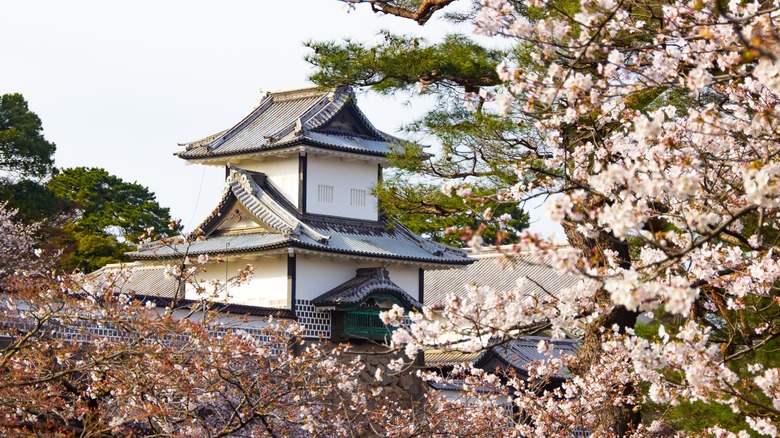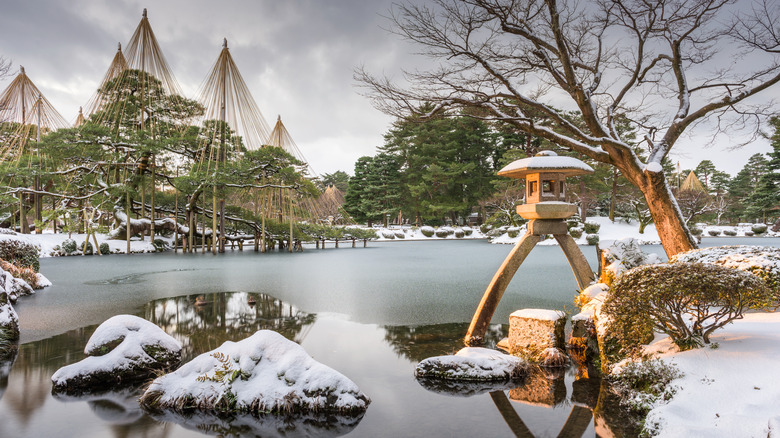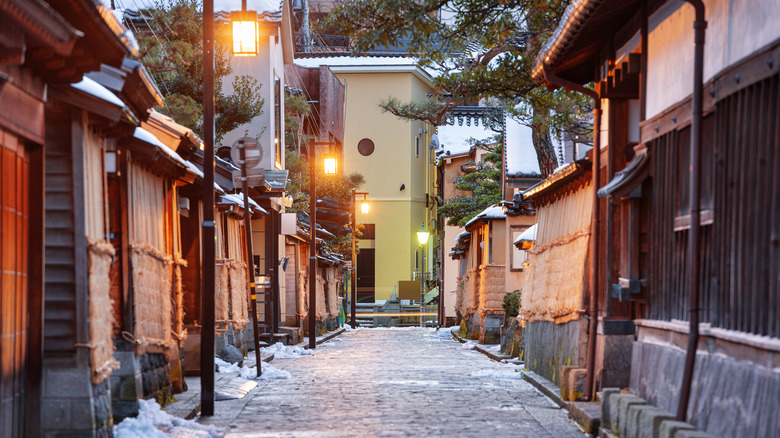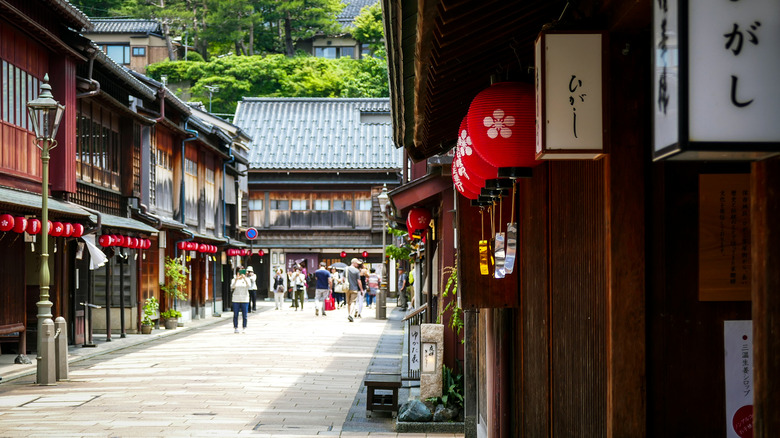The Japanese City Called 'Little Kyoto' Is An Uncrowded Gem Full Of Gardens, Geishas, And Samurai History
Japan is a place that many wanderlusters dreams of visiting, and it's totally understandable. Travelers want to feel the energy of Shibuya Crossing in Tokyo, stroll through the unique and walkable paradise of Yokohama, and witness the cherry blossoms in Kyoto. It's one of those rare destinations where every city feels like a must-see. But when Kyoto's charm starts to feel a little too big, Kanazawa — its quieter little sister — brings you its best bits without the noise. Often referred to as "Little Kyoto," this city doesn't shout for attention but deserves it. Kanazawa has all the elegance of Kyoto but none of the crowds.
During the Edo period, Kanazawa was the heart of the Kaga domain and soon expanded to become one of Japan's largest castle towns. The layout of the city revolved around its castle, with samurai living in the Nagamachi Samurai District. Meanwhile, Kanazawa was also home to growing geisha culture, particularly in the Higashi Chaya neighborhood. This area became known for its elegant two-story geisha houses, which stood out with their latticed facades and traditional interiors. Kanazawa's historical districts were able to escape major destruction during the wars, and much of their Edo-era architecture remains well preserved.
You won't have to worry too much about getting to Kanazawa. Fly into Komatsu Airport, which is 45 minutes away by car or an hour by train and bus. If you're in Tokyo, taking the Shinkansen bullet train is a bucket-list experience — you'll be soaring through Japan's stunning landscapes and arriving in just two and a half hours.
Seasonal beauty shines in Kanazawa's gardens
Kanazawa's green spaces are nothing short of spectacular, and every kind of visitor will find something they feel inspired by. If you're drawn to grand, sweeping landscapes, Kenroku-en is your spot. This is one of Japan's most famous gardens for good reason. The main feature here is the vast pond, Kasumigaike, that stretches before you with a small island in its center. Representing eternal prosperity, the island is what gives this oasis its identity. Visit in winter to see the iconic yukitsuri ropes, or watch the cherry blossoms transform the scenery into something out of a painting during spring. As for fall, the season turns the grounds into a riot of red and gold.
For those who prefer something quieter and more intimate, Gyokusen-en Nishida Family Garden is a must. Designed with care and precision, the natural wonder boasts stone paths snaking through verdant hills and flowing waterfalls. The pond here even mirrors the kanji for "water." While you're there, sit in the tea house, believed to be the oldest in Kanazawa, and sip on green tea as you gaze at a 350-year-old pine planted by a samurai. The outdoor retreat changes throughout the year, so whether it's spring blossoms or autumn leaves, you're in for a treat.
If you're looking for serenity with a side of history, Shofukaku Garden delivers. The gentle ponds, kaleidoscopic flowers, and stone accents make it perfect for anyone seeking a moment of peace. Come in spring to see cherry blossoms reflected in the water or in autumn to view the fiery foliage complementing the bridges and shrubs. Whether you're into snapping IG photos, quiet meditation, or soaking in the beauty, this place has all the right vibes.
Stroll through Nagamachi, where samurai valor persists
Samurai history is the heartbeat of Kanazawa's past, with stories of power and legacy. Nowhere is this history more alive than in the Nagamachi District. Walking the narrow streets of this district, you'll see where the samurai once lived in the shadows of Kanazawa Castle. Among the highlights of Nagamachi is the Nomura-ke, a samurai residence frozen in time. This restored house provides a window into the lifestyle of the samurai, complete with artifacts, armor, and a spectacular garden. The Nomura family, tasked with protecting the Kaga lords, left behind their mark with impressive swords and armor on display. The real gem here is — you guessed it — the garden. This tranquil space features a stream, waterfall, and even a 400-year-old bayberry tree. From the tea room upstairs, you can enjoy a warm drink while taking in the views — a taste of the peaceful side of samurai life.
The Nagamachi District is also home to the Shinise Kinenkan Museum, a former pharmacy that exhibits how the merchant class prospered as the samurai's influence waned. Step inside to observe all sorts of Kanazawa crafts while learning about the merchant's role during the Edo period. For a deeper look into the lives of lower-ranking samurai, visit the Ashigaru Museum. This small but insightful museum shows what life was like for the foot soldiers, the lowest rank in the samurai class. Two preserved homes provide a glimpse into how the ashigaru lived, complete with details about their duties and daily life.
Check out Kanazawa's geisha culture in action
The geisha history in Kanazawa is as fascinating as the samurai's, and the Higashi Chaya District is one of the best preserved in the country. The wooden tea houses here, once popular among the rich and powerful, remain venues for geisha performances, with the sounds of shamisen and drums spilling into the streets while they entertain. This area is also known for its gold leaf, and you can try your hand at creating your own designs at local galleries. Better yet, visit the Kanazawa Yasue Gold Leaf Museum to learn more about this craft.
The Nishi Chaya and Kazuemachi Chaya districts are also worth exploring. Nishi Chaya is a quieter, more relaxed area with a handful of shops, cafes, and wine bars along its single street. Kazuemachi, with its narrow alleyways and riverscapes, has a more mysterious feel. It's known for its role in the novel "Asano River Dusk" by Hiroyuki Itsuki, a clandestine love story set in the district. Both still have tea houses, where geisha continue to entertain and share their art through music, conversation, and performance.
Kanazawa is undoubtedly one of the most gorgeous cities in Japan, alongside Nikkō, Yokohama, and Takayama. The fact that it's a calm and budget-friendly Japanese destination in comparison to Kyoto only adds to its appeal. When in doubt, make Kanazawa the next stop on your itinerary — it's sure to leave you with memories of culture, history, and seasonal magic.



